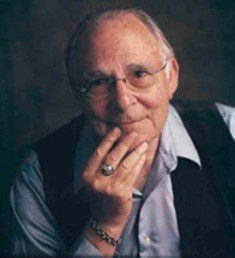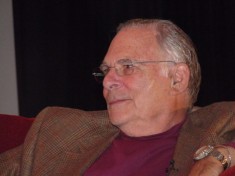| Paul Ekman | |
|---|---|
 |
|
| Psychologist | |
| Born | Feb. 15, 1934 Washington, D.C. |
| Nationality | American |
Paul Ekman is a famous American psychologist. He was a pioneer in the study of emotions with their relationship to different facial expressions. He also created an atlas of emotions with more than 10,000 facial expressions. This gained him the reputation as the best human lie detector in the world.
He was ranked 59th out of 100 most cited psychologists of the 20th century. He has conducted seminal research on specific biological correlates of specific emotions. His best known discovery is called micro expression, which shows up on our faces for fractions of a second as an indicator of emotion.
Early Life
Ekman was born into a Jewish family on February 15, 1934, in the state of Washington. He grew up in different places, including New Jersey, California, and Oregon. His dad was a pediatrician and his mother was an attorney. His sister, Joyce, is a psychologist who practices in New York.
As a young man, Paul Ekman wanted to be a psychotherapist but when he turned 14, his mother developed a severe mental illness. This greatly influenced his passion and he therefore decided to spend his life helping people who were like his mother.
University Years
When Paul turned 15, he enrolled at the University of Chicago. Here, he completed three years of undergraduate study. After this, he studied for one year at New York University where he earned his BA in 1954. During his stay in Chicago, he was interested in group therapy sessions and understanding group dynamics. His first research subject was group therapy under Professor Margaret Tresselt.
Soon after, Ekman was accepted to Adelphi University for clinical psychology. While still working for his master’s degree, he was awarded a pre-doctoral research fellowship from the National Institute of the Mental Health (NIMH) in 1955. His master’s thesis mainly focused on facial expressions and other bodily movements. He started his study in 1954. In 1958, he finally received his Ph.D. just before he joined the military.
Professional Years
Paul Ekman received his first research grant form NIMH in 1963. This was to study nonverbal behavior. The award continued to be renewed for the next 40 years and this paid his salary until he was offered a position at the University of California in 1972. In 1985, Paul published his book – Telling Lies.
Measuring Nonverbal Communication
Ekman’s first interest in nonverbal communication led to the publication of his first book in 1957. The book described how difficult it was to develop ways of empirically measuring nonverbal behavior. After this, Paul focused on developing different techniques for measuring nonverbal communication. He discovered that facial movements that created facial expressions could be identified through empirical research.
He also found out that human beings are capable of making over 10,000 facial expressions with only 3,000 being relevant to emotion. Silvan Tomkins, a psychologist, convinced Paul Ekman to extend his studies of nonverbal communication from the body movement to the face.
Emotions as Universal Categories
 According to Charles Darwin, emotions are biologically determined and universal to the human culture. However, during the 1950s, the most popular belief was that facial expressions and their meanings were culturally determined through a behavioral learning process.
According to Charles Darwin, emotions are biologically determined and universal to the human culture. However, during the 1950s, the most popular belief was that facial expressions and their meanings were culturally determined through a behavioral learning process.
After a series of studies, Paul found a high agreement across members of diverse Eastern and Western literature. He found some expressions to be universal. The expressions include anger, fear, disgust, happiness, surprise and sadness. Together with one of his close friends, Wallace Friesen, they demonstrated that some emotions were exhibited with very specific display rules, culture-specific prescriptions on who can show the emotions to whom and when. These rules could explain how cultural differences can conceal the universal effect of expression.
Later in the 1990s, Ekman proposed another list of basic emotions. This list included a wide range of positive and negative emotions. The emotions included contempt, embarrassment, amusement, guilt, contentment, pride, shame, sensory pleasure, satisfaction and relief.
Detecting Deception
Ekman has greatly contributed to study of all social aspects of deception. He researched why people lie and why people are often not concerned with detecting deception. He reported that those facial micro-expressions can be used to detect a lie. After testing about 20,000 people from every walk of life, only 50 people could detect a lie with no formal training. Together with Dacher Keltner, the Executive Director of the Greater Good Science Center, they discovered strategies for building resilience, reducing stress and strengthening relationships with family, colleagues, clients and friends.